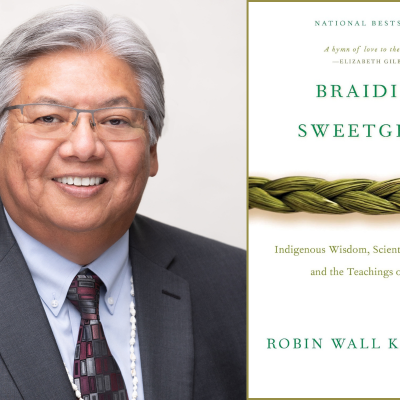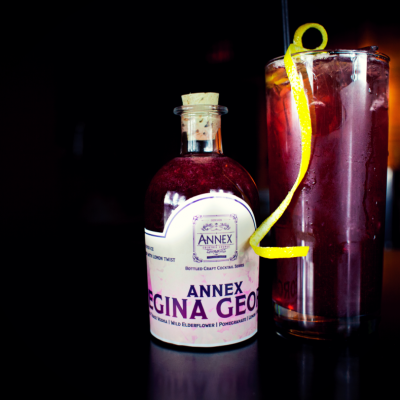Office Doors: A Day with Ralph Remington

Deputy director for Arts & Culture, City of Tempe and producing artistic director of Tempe Center for the Arts
As told to | Julie Coleman
5:30 a.m. >> A SOLID PULSE BEGINS THE DAY
I start each day with a half-hour on the elliptical and then head downstairs to read The New York Times and go through The Arizona Republic to see if there’s anything pertinent that I need to pay attention to. I usually have “The Today Show” on while reading and flip to “Morning Joe” on MSNBC as well. After a light breakfast, I get on my way to Tempe Center for the Arts.
8:30 a.m. >> DAYLONG MEETING OF THE MINDS
In my role, I oversee TCA as well as the Tempe History Museum, arts engagement at Edna Arts, and public art. As all this falls under my rubric, I spend my day in back-to-back meetings, traveling between various buildings, such as the library complex, TCA and City Hall. The meetings’ focus varies and can cover internal operations at TCA and arts and culture in general, capital projects for needed repairs to the negative-edge pond and roof, and City business. Pre-pandemic, traveling in my car to meetings gave me the headspace to sort things out. I could decompress while listening to an eclectic mix of music, ranging from classical and jazz to classic rock, hip hop and country. The music I select speaks to my mood and inspires me in different ways.
11 a.m. >> PLANNING IN THE WORKS
I carve out time throughout the day planning our TCA season and determining what plays we will produce and present. Producing and presenting are two different things. When we produce, we’re taking something from the page to the stage, and I direct. Right now, we produce two plays a year and present 12 to 15 times a year. Season planning also includes talking with agents and managers and researching acts to bring in. Several times a year, I travel to conferences such as the Association for Performing Arts Professionals, that showcase various artists and give you a taste of what you might want to bring to your facility.
1:30 p.m. >> PAST AND PRESENT INTROSPECTION
Since I have been in this role, the changes that have occurred have been immense. I was hired on the heels of the creation of the Tempe Arts and Culture Plan put together by 900 stakeholders in the community. The community wanted original programming in addition to community partnerships with resident artists groups, like we have with Stray Cat Theatre and Desert Dance. I’m proud of the community for having faith in us and giving us a mandate in 2018 to do what we do by approving the arts and culture tax that funds us in perpetuity. Since arts and culture was combined with the history museum and arts center, we have reimagined our business practices over the past two years for this relatively new enterprise. Admittedly, we had some real problems around equity and inclusion. As a result of observing this, we began a comprehensive training and have just come out of that on the other side. This training will continue as it is literally a part of what we do. We’re being trained to see everything through an equity lens as opposed to everything is the same, everybody sees it the same, everybody is impacted the same by every decision, because that’s just not the case. Things have gotten better because people are willing to open up, listen, learn and make changes.
3 p.m. >> ARTISTIC EVOLUTION
We now provide a place for mainstream works to be seen, but also a platform for marginalized and disenfranchised people to be heard. We want to carve out a niche where if you want something edgier, more compelling, riskier, it’s there.
Because of COVID, we had to furlough a number of our temporary, part-time staff because there’s no work for them. The full-time staff have been driving a lot of online content via our Facebook pages, the Tempe Arts & Culture page, as well as the Tempe Center for the Arts website. Our digital content and interactive programming showcase various artists throughout the Valley and across the country. During this time, we’re also doing a lot of repairs and fixing up our spaces to ensure that when we do return, things are ready and in tip-top shape. Right now, I don’t know when that will be.
10 p.m. >> UTILIZING A LIFETIME OF TOOLS
My workday ends at various times, depending on what obligations I have. After eating, I enjoy reading, listening to music, watching television and just reflecting. My job is a nonstop grind, but it’s a fun one. It is one of the best jobs I’ve ever done because it pulls on all the tools that I’ve picked up along the way in my life. I’m able to utilize almost every tool, from having been a politician and in the city government, to being a lifelong artist, an administrator, and a kind of organizer and activist. I’m able to give that in the workplace every day, and I don’t know many jobs that would allow you to do that.
To learn more, go to tempecenterforthearts.com.






